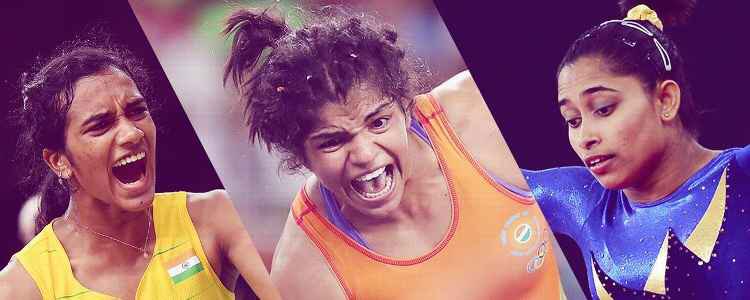The quadrennial games came to an end day before yesterday and the nations of the world are celebrating the victories of their champions.
One such country is our own, that is India.
Being one of the most populated countries in the world, around 121 athletes participated in this year’s Olympic games held in Rio de Janeiro, Brazil.
Out of the contingent, only 2 of the athletes could get our country 2 coveted medals (one being bronze and the other being silver).
Here are the key points to be noted by the Indians from this year’s Olympic games –
– Women reigning this Olympics.
– Dipa Karmakar being the first female from India to qualify for finals of Vault gymnastics.
– Sakshi Malik winning bronze medal in Women’s Freestyle Wrestling (58kg).
– PV Sindhu winning silver medal in Badminton Women’s Singles.
– Aditi Ashok finishing at 41st in Women’s Individual Golf at the age of 18.
– Yogeshwar Dutt missing out on his victory in wrestling.
– The Susheel Kumar vs Narsingh Yadav drama.
– Narsingh Yadav’s 4 year ban for failing doping test.
– Saina Nehwal’s early exit.
Phew!
That’s something…

Hats off to the Indian women for proving their prowess at an International level and defining their strong foothold in sports. The whole of the country is celebrating their victory today, from a boy aged 6 to a granny aged 65-70 are talking about them and not to forget the monetary benefits, rewards, and the compliments that the Olympians are getting.
It is a glad sighting to see that the Olympic games made our country to shift from being Cricket frenzy to Sports frenzy overall. The craze for women’s badminton finals was indeed an example.
But…
These things happen only if they WIN! That too of the highest order.
We all know the rewards, compliments, appreciation, benefits that PV Sindhu is getting (which she absolutely deserves). But what about Sakshi Malik, Dipa Karmakar and the marathon runner Jaisha who fainted during her run because of the apathy shown by Indian officials at the Olympics?
Why do we, as a nation come together only during victory but not during defeat/failure? Even if we do, why is the support unsubstantial?
There are innumerable athletes in our country who aren’t even given the very basic amenities to train under supervision. Dipa Karmakar herself had stated that the facilities at the training center wasn’t of good standards. Now being a gymnast, poor facilities such as these might as well cost her life if she misses a jump! Shouldn’t we be tending to these things before hand?
I personally feel every winner should be treated equally irrespective of their position of victory. The International Sports Federations are already taking care of the prize money that each winner will be getting. Once a person wins, they join the elite group. It is an impediment that we appreciate them in the same manner.
Trying to replace Gopichand so that PV Sindhu can get better training for her further tournaments and brands those are trying to sign the winners as brand ambassadors to capitalize on their popularity to promote their products shows the greediness of our system.
Why not shifting the focus towards training many more athletes and prepare them for 2020 Olympic games? Yes, this will be happening, but I definitely don’t see the right moves being made on this as of now.
2 medals of 2016 may as well get converted to 20 or even more in 2020 if we collectively act upon it!
To make the LEGENDS of tomorrow, the stars of today have to consciously support fellow participants by curating them on a daily basis.
Do we support our athletes throughout?
Are they getting all the amenities that they require to practice day in, day out?
I wish I had answers for these questions….
Ps – Congratulations to all the winners. You make us PROUD!
In other news, Deepika Pallikal and Sourav Ghosal have won Silver at World Squash Championship held in Australia.
Now, how many of us knew about this?
#RioOlympics #Olympicgames #Dipakarmakar #PVSindhu #SakshiMalik#Rio2016 #IndianOlympians
